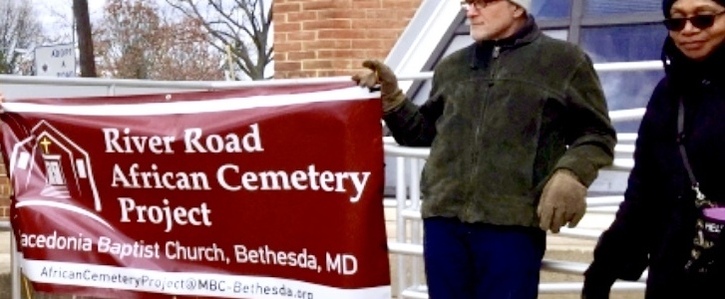100 signatures reached
To: Roger Berliner, County Council President, Montgomery County, Maryland
Protect Bethesda African Cemetery

Petition Text
Revisit the Westbard Sector plan incorporating the preservation of the history of the Bethesda African Community within a museum and sanctifying the African Burial Ground with a living memorial to the first generation of free Africans in America whose bodies had formerly been bought and sold in slave markets in Montgomery County.
Why is this important?
This community built the main thoroughfares in the county. It manufactured building materials and provided the manpower building the bunker under the White House.
By around the 1850s free Africans owned property in Bethesda but were confined to a small area by covenants preventing them and Jews from living elsewhere. A community once thrived there. That history has been erased, but needs to be preserved. A museum could provide the archive for that history as well as serve as the vehicle for conveying the story to future generations. Washington Post death notices, County plat and plot maps, oral histories, aerial photos and other historic materials substantiate the existence and location of the cemetery. No documentation of bodies being disinterred has ever been produced. Currently there is a Sector Plan that seeks to place a parking garage and housing units on top of what is now a parking lot that was placed on top of the African Cemetery (allegedly at least in part to prevent erosion from exposing the remains).
History of the enslavement of Africans is American history. More importantly, the triumph of Africans against enslavement in a living museum and memorial will be an ongoing testament to these people, their heritage and their legacy.
By around the 1850s free Africans owned property in Bethesda but were confined to a small area by covenants preventing them and Jews from living elsewhere. A community once thrived there. That history has been erased, but needs to be preserved. A museum could provide the archive for that history as well as serve as the vehicle for conveying the story to future generations. Washington Post death notices, County plat and plot maps, oral histories, aerial photos and other historic materials substantiate the existence and location of the cemetery. No documentation of bodies being disinterred has ever been produced. Currently there is a Sector Plan that seeks to place a parking garage and housing units on top of what is now a parking lot that was placed on top of the African Cemetery (allegedly at least in part to prevent erosion from exposing the remains).
History of the enslavement of Africans is American history. More importantly, the triumph of Africans against enslavement in a living museum and memorial will be an ongoing testament to these people, their heritage and their legacy.

